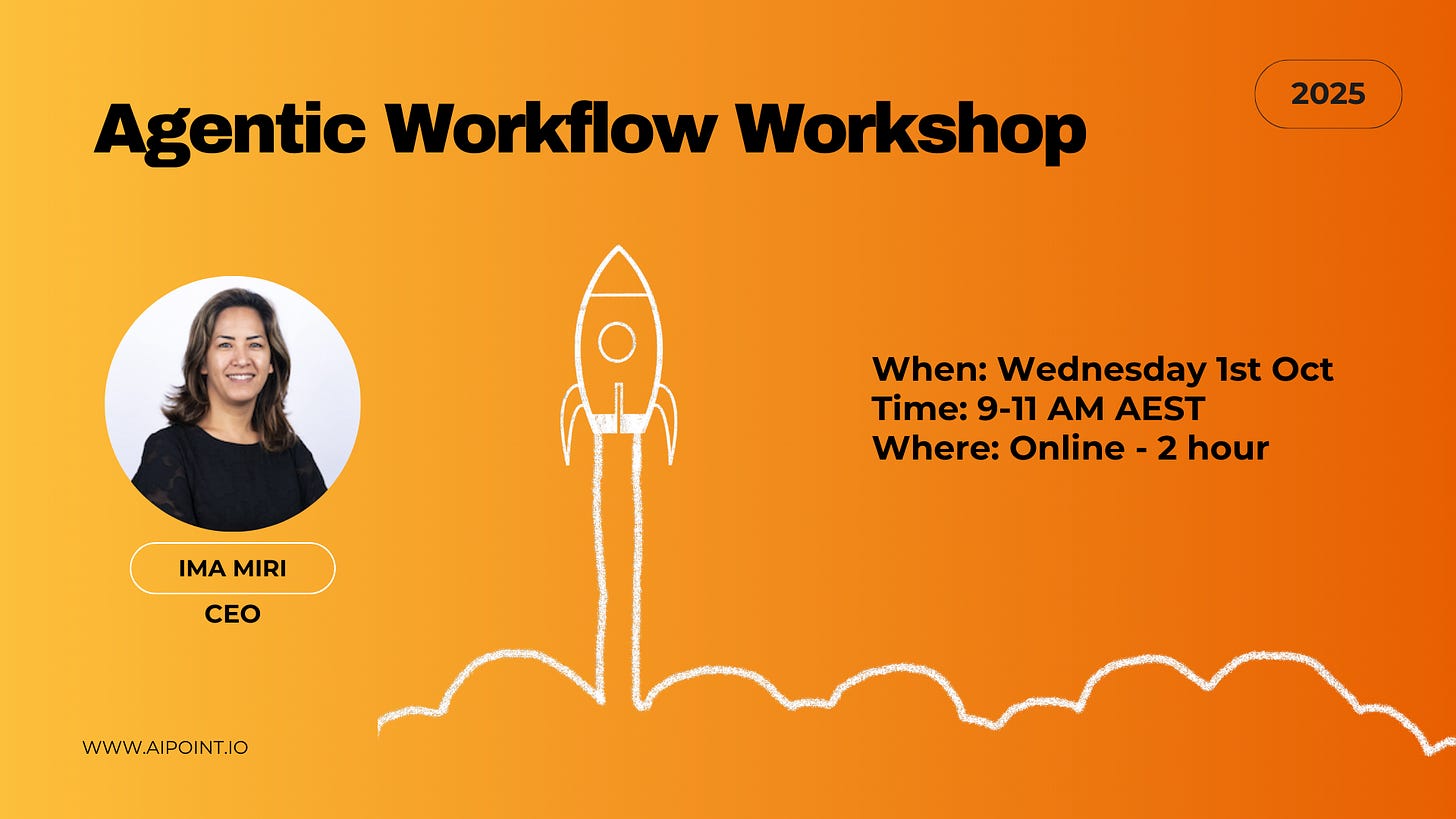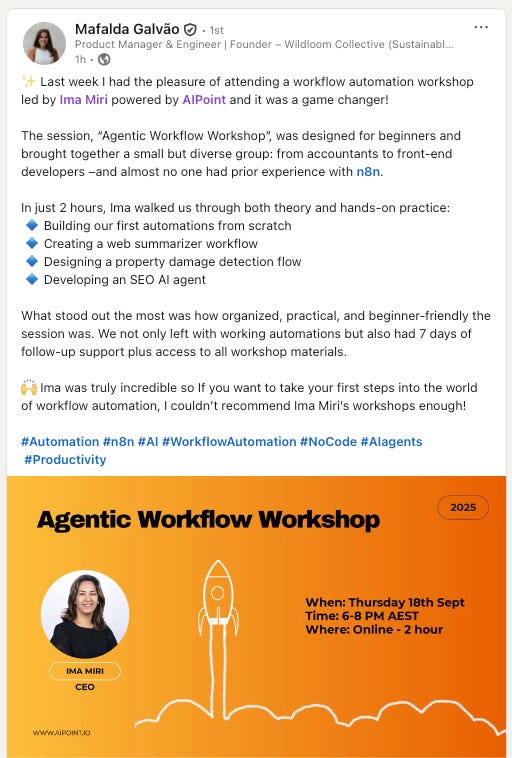n8n Starter Workflow Templates & Upcoming Workshop
I recently shared a short starter kit video to help everyone take their first steps in building AI-powered workflows with n8n.
I like to help everyone learn how to build agentic workflows, automations where AI takes action, not just gives answers.
In this post, I’ll walk you through the starter steps to create your very first AI-powered workflow in n8n, an open-source automation platform.
Whether you’re a complete beginner or already working with AI tools, by the end of this guide you’ll know how to set up n8n, connect it to an AI model (like OpenAI), and create a working AI agent that performs real tasks.
By the end, you’ll know how to:
Set up your n8n cloud environment
Connect OpenAI (or any other model provider)
Import starter templates
Build and run your first AI workflows
Let’s dive in.
Step 1: Set Up Your n8n Environment
Head over to n8n.io and click Get Started.
You’ll sign up for a 14-day free trial.
After signing up, you’ll create a cloud environment.
This is where your workflows live.
Choose a name you’ll use consistently, since it will be part of your workspace identity.
Once inside, you’ll see the n8n dashboard, ready to host multiple workflows.
Step 2: Connect Your AI Model
Most people start with OpenAI, but you can also use providers like Mistral, Anthropic, DeepSeek, or Azure OpenAI.
For OpenAI:
Go to platform.openai.com.
Log in, then create a new secret key under your account settings.
Save the key somewhere safe, you’ll need it again.
In n8n, go to Credentials and store the API key there. This way, you can reuse it across workflows without re-entering it.
Step 3: Import Your Starter Workflow
To make things simple, the starter kit includes templates you can import directly:
In n8n, click the three dots on the right-hand side.
Select Import from file.
Upload the template file from your computer.
Now you’ll see a ready-to-use workflow. Let’s look at an example.
Example 1: Blog Summarizer
This workflow takes a blog link, fetches the content, and generates a summary.
The AI node is set up with a prompt telling it to summarize the blog into JSON format.
JSON output makes it easy to integrate the summary into other tools later.
When you run the workflow, n8n fetches the blog content, processes it through OpenAI, and returns a clean summary. You could even build a simple chatbot interface on top of this!
Example 2: Share Summaries with Your Team
Let’s take the Blog Summarizer one step further.
After generating the summary, the workflow parses the JSON.
Then it sends the output to a Discord channel (or Slack, or any team communication tool) using a webhook.
The result? AI-powered news or blog digests automatically posted for your team to read and discuss.
Example 3: Social Media Insights
Another workflow in the starter kit helps with content strategy:
Input a brand name and industry.
The AI agent finds common hashtags and trending posts.
It analyzes the results and creates a creative brief with recommendations for future content.
Finally, it can post the insights directly to your chosen channel.
This kind of workflow is a game-changer for marketing teams, saving time on research and giving you AI-powered direction.
Where to Go Next
This starter kit gives you the foundation to:
Summarize content automatically
Share AI insights with your team
Generate creative briefs from social trends
From here, you can expand into more advanced automation tailored to your business.
If you’d like to go deeper, you can book my upcoming workshop (only 2 spots available), where we build complex workflows together.
And if you are unsure about attending the workshop, check out how Mafalda found the session.
Thanks for joining me on this journey. I can’t wait to see what you create with n8n and AI automation.




